Jerusalem’s renewed Tower of David Museum has opened to the public once more after a three-year, $50 million renovation, offering an accessible and immersive visitor experience. Located near the Jaffa Gate entrance to the Old City of Jerusalem, the Tower of David is an ancient citadel that once defended the city. The museum explores Jerusalem’s 4,000-year history via immersive exhibits and interactive technology.
“No other museum can tell Jerusalem’s story in such a distinctive setting, within this citadel that has witnessed so many eventful periods in the city’s past,” says Eilat Lieber, the museum’s director and chief curator.
The museum broke ground on the development during the pandemic in October 2020. The project was carried out by a team of archaeologists, architects, curators, researchers and designers. The redesign features 10 new galleries and has doubled the size of the site to 20,000 square metres. There is also a new sunken entrance at the Jaffa Gate.
Visitors can explore the city’s story through cutting-edge exhibits, and artefacts which date back as far as the 15th century BC. Highlights include a vast interactive multimedia wall, called Sands of Time. This covers the length of the first gallery and immerses visitors in Jerusalem’s history.
Films created for the new museum include an animated history of Jerusalem, several animated shorts, and an original film of the ancient city from 1896. Meanwhile, The ‘Circle of the Year’ is an immersive experience where images from different religious festivals are projected onto one of the citadel’s vaulted ceilings. For the first time ever, the citadel is accessible to all visitors with the first-of-its-kind elevator in Israel, as well as chair lifts and ramps.
Tower of David open once more
Blooloop last spoke with Eilat Lieber in 2018, when the renovations were in the planning stage. Now she says:
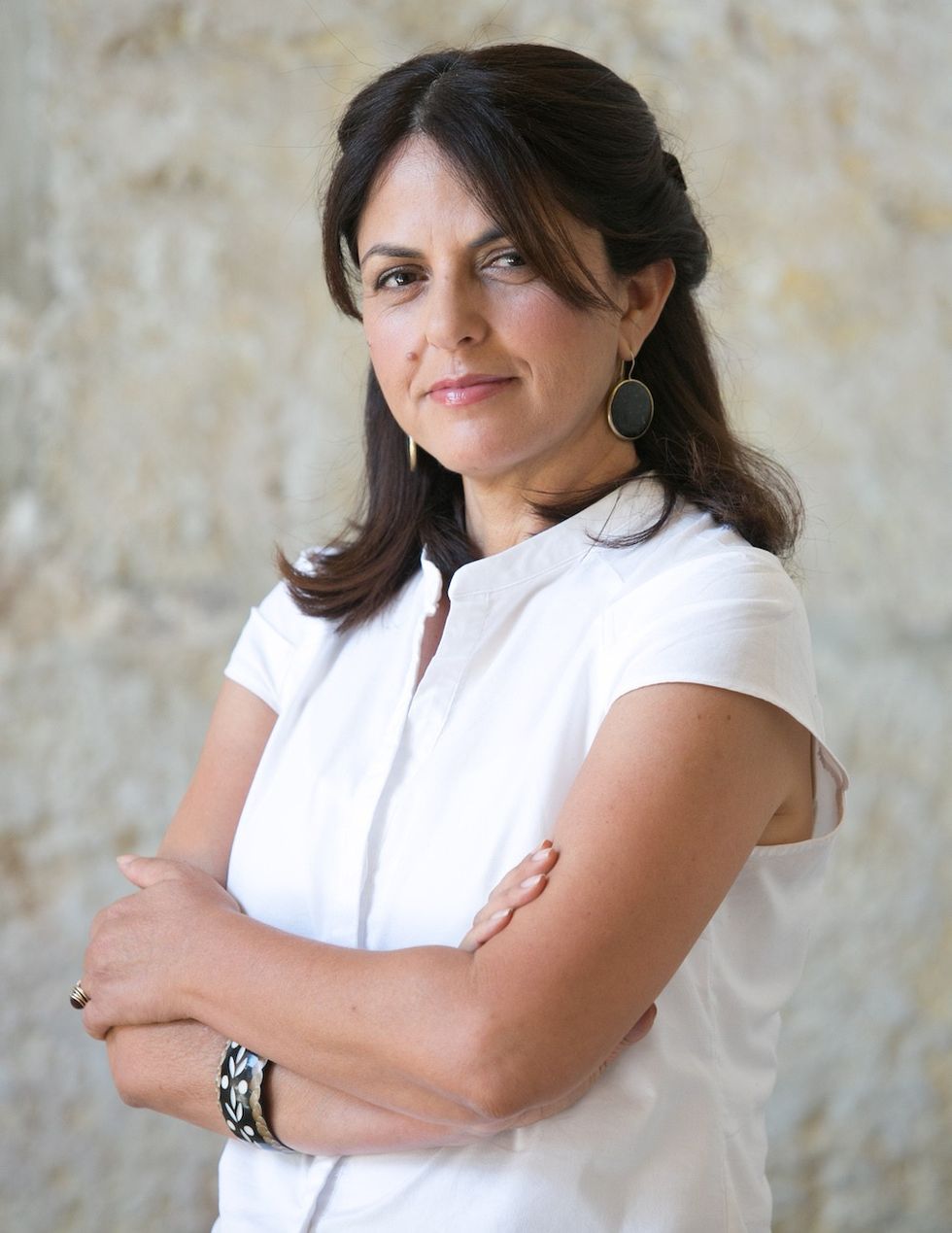
“It is very exciting. The first moment we opened the gates of the museum and saw the line of people coming in was when we realised that it was really time to show off the results of the huge work of the team here. More than a hundred people worked on all aspects of the museum - architects, designers, and engineers. We had experts in many fields creating this incredible visitor experience.
"We have been really excited and happy to witness the reaction of visitors to what we have done, which is a full experience of the site – the archaeology, first, and a new exhibition.”
This has all been made easier to see by the accessibility solution implemented to improve the flow of visitors.
Rising to the challenge
Lieber contextualises the renovation through the story of her leadership of the museum, and the challenges she has overcome on her way to this point:
“When I started as a curator many years ago, I worked all over the country, telling the story of the history of Israel in many different museum sites all over the country. My last project was here in Jerusalem. When I was appointed to the museum I was very proud, telling my family that I would be going back to the Tower of David, and about this huge mission to renew the museum.
"My son was at high school at the time. He said, ‘I can't believe you are going to work in that boring museum.’ I said, ‘You think the Tower of David is a boring museum?’ He said, ‘Yes: history is boring.’”
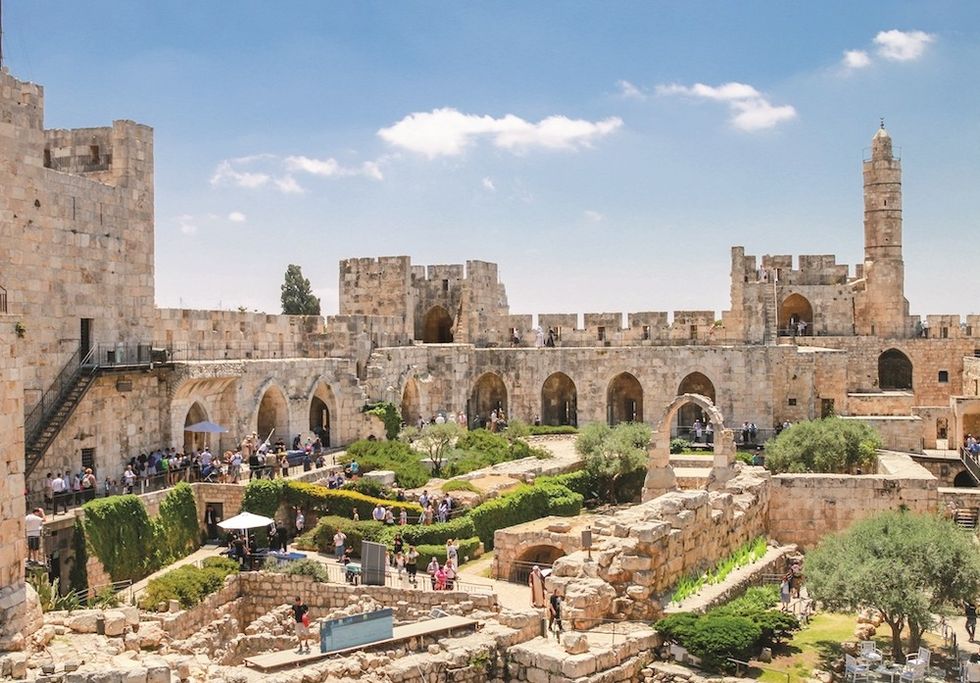
Lieber realised that to her son, history meant the tedium of ploughing through textbooks and preparing for exams. To her, it was something vibrant and fascinating.
“History is just like our life. It’s colourful, it's rich, and more than this, it is relevant to our time. Because if you think about it, there is no city in the world where the past is more evident in everyday life than Jerusalem, not only in the conflicts, but inside Israeli society.
"So, I took this as a challenge. We had to find a way to engage our visitors. Especially the younger generation that had no patience for reading deeply to engage with content. We knew that we would need to use technology because it is the language of the 21st century. The technology is a tool, however; it is not, in itself, the message.”
Choosing the right tech for the Tower of David
The first decision made was to create an innovation lab in the museum:
“It would be a space where we could host companies to try to find how to improve the visitor experience by using VR and AR technology,” she explains. “Curators are storytellers; we are constantly striving to find ways to tell a story using different tools. The museum’s content is the most important part, of course. But we worked with numerous companies, including from Canada and the UK, to come up with strategies for interpreting it. We used the Tower of David as a huge beta site.
"We had visitors coming every single day. They could try different kinds of technologies to see what worked, and what didn’t.”
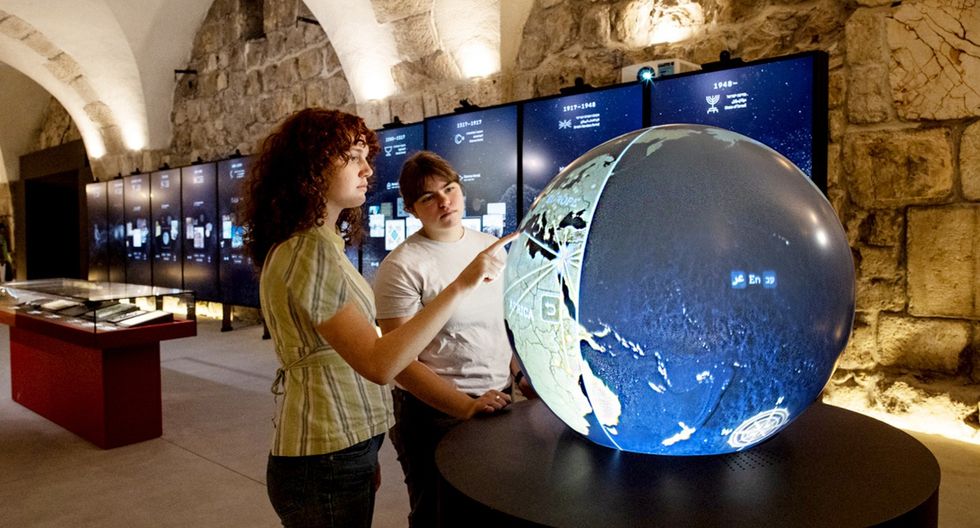
For example, she says:
“We did virtual tours using virtual reality, to take visitors back to Jerusalem during, for instance, the Roman period. By using the VR headset, they could feel as if they were inside history. This was the first time I heard visitors say, ‘Wow: this is cool.’
"We want visitors to be active, not passive."
Creating a richer experience
Lieber wanted the museum to offer a rich, multilayered experience where guests could choose to dive deeper into any topic:
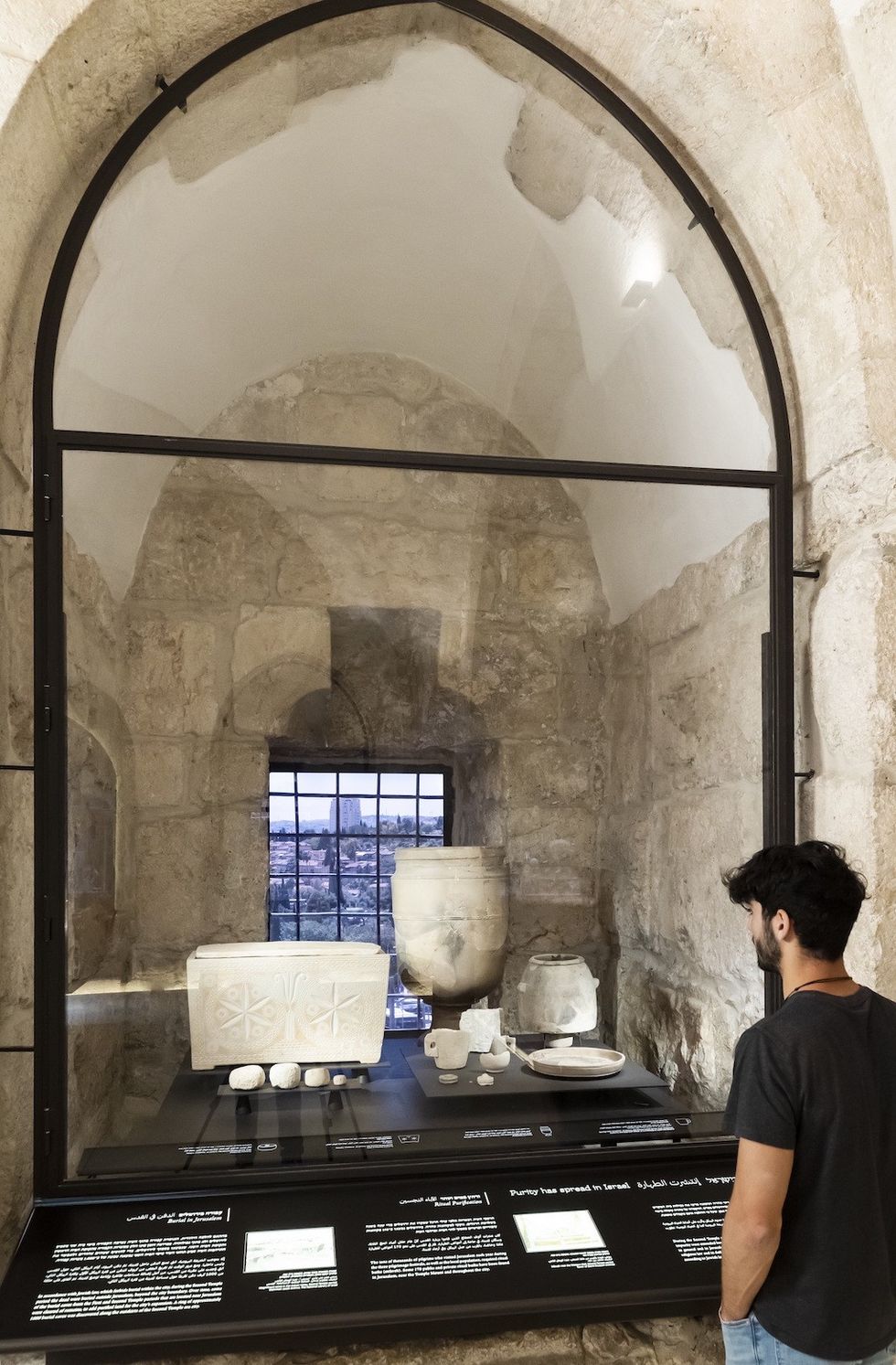
“If you want to find out about art and mosaic, Christianity or Judaism in Jerusalem; architecture, any period, you can. We wanted to offer an active experience,” she explains. “We also wanted the experience, together with the rich content, to be beautiful. Museums, especially historical museums, are about the aesthetic experience as well as the rich content."
"Historical museums worldwide tend to be less popular than art museums. But we feel that Jerusalem is a different story because it is so rich in history, archaeology, and culture. We wanted history to look beautiful. So, we created a team of creative experts to make the best possible use of the materials we collected from archives and libraries all over the world.”
Among the archaeological pieces Lieber has chosen to showcase are some that date back 3,500 years. This includes ancient coins, stone cups, and a Roman sword. Alongside these antiquities is the 12-metre-interactive multi-media wall, Sands of Time, running the length of the introductory gallery. This allows visitors to discover Jerusalem's 4000-year history for themselves.
Tower of David: where tech meets heritage
The juxtaposition of the ancient with cutting-edge technology is powerfully impactful.
“The previous museum – it was a very good museum, by the way - was not based on any collection. It was more like a visitor centre, using replica models.
"We wanted to build the reputation of the Tower of David as a real museum with a real collection. So, for the first time, we brought all the finds from the different excavations across the city back here. It was a huge project to search all over the country, in different places, through the storage of the Israeli Antiquities Authority, reaching out to archaeologists, explaining to all of them that this was the right time to collaborate on bringing the site together with the stories of the city."
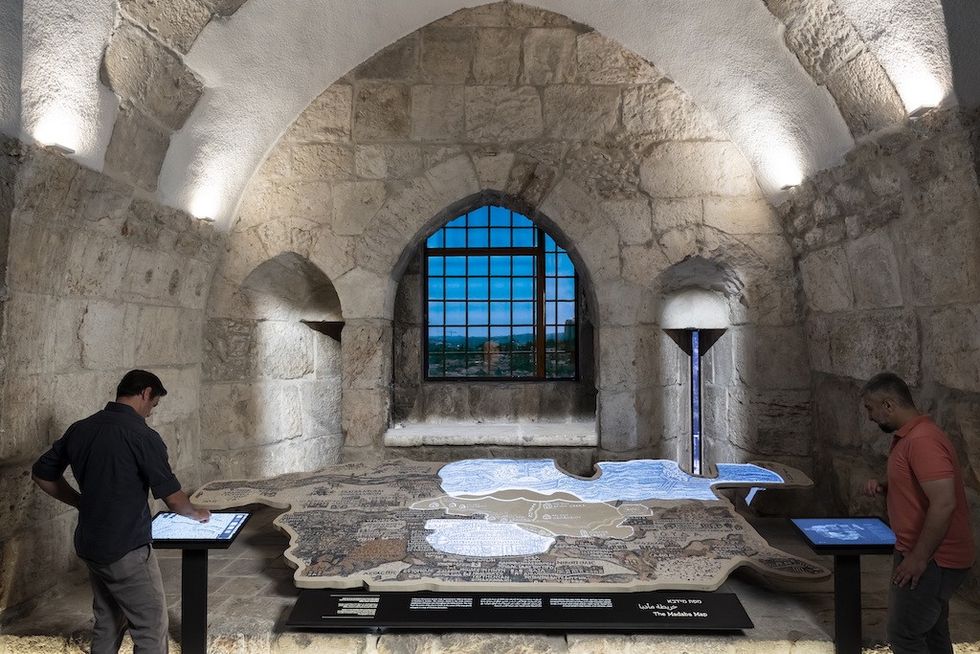
"The Tower of David is a time capsule of Jerusalem. It's a microcosm of the city. It's part of the story, not just the venue of the museum. There is no other site like the Tower of David that represents all the layers of history.”
In the previous museum, Lieber explains, the theme was the chronology of Jerusalem:
“It explains why my son – and others – found it boring: chronology is not a story. We changed the whole premise. Of course, we are still using chronology; you can’t tell the story without it. But the main objective of the museum is to discover how Jerusalem, a small city in the hills of Judea, became so important for so many people – millions of people - from all over the world.”
A sensitive transformation
Lieber’s office has an arrow-slit high on the wall. Behind her desk, a stone stairwell and ancient vaulted stone arches are visible. The Tower of David was built as a fortress to protect Jerusalem from enemies. Transforming it into an up-to-date museum with Wi-Fi while maintaining its historical integrity was a challenge. While it was important to create an up-to-date, immersive, and fascinating museum, it was equally important to preserve the beauty and antiquity of the building.
“We worked with Kimmel Eshkolot, the architects, and Studio de Lange, the designers. They did an amazing job here,” Lieber says. “The cables were all hidden behind the grouting between the ancient stones and under a floating concrete floor, created to preserve the original flagstones.”
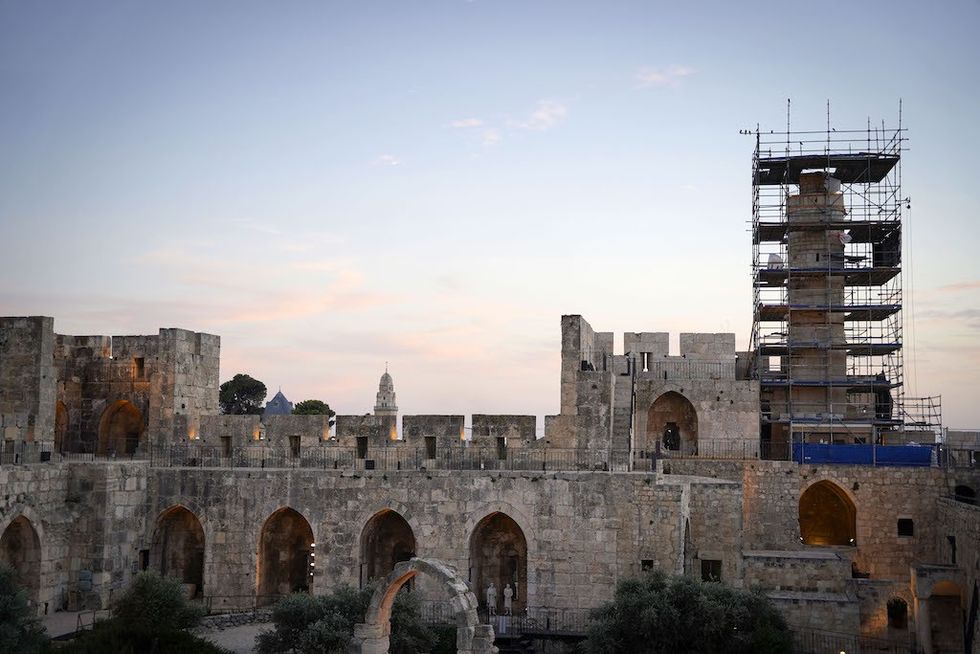
“We worked with the archaeologists to ensure the antiquities were unharmed, and to keep the beauty and uniqueness of the building. The result is unbelievable. We also wanted to keep the eye connection between inside and outside, because the city is really present here.
"Every single gallery has a different window to a different view of the city. Jaffa Gate Square, for example, or to the west, to the Mamilla area, or the new neighbourhoods out by the city wall. So, the city is actually inside the museum. It's beautiful, because we’re telling the story of the city, and the city is right here.
"When you see, for example, a beautiful case of artefacts with the background of Jerusalem today, in different hours of the day or different seasons, it's meaningful because it's the past and the present together.”
Thematic exhibitions
The result of all the planning and hard work is, she says, very beautiful. However, she adds:
“As a curator, I must tell you that it was a huge challenge. The first lesson in museology is to learn that, as Umberto Eco said, to choose is to lose. We only have 1000 meters in the museum to tell 4,000 years of rich history, culture and archaeology. It was difficult deciding what we should choose, and what we would lose.
"I'm very proud to say that we feel we have built the core of the museum in a way that means you can spend hours using technology to immerse yourself in history and explore every topic deeply. But it still looks very gentle, clean, and beautiful.”
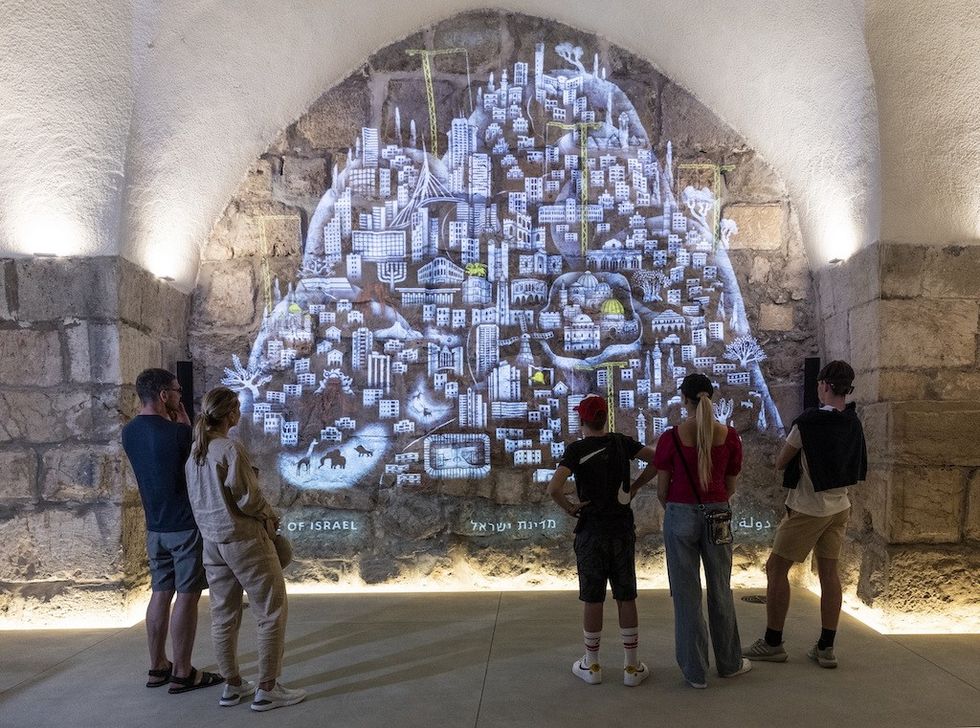
In terms of exhibitions, she adds:
“For us, it was very important to be able to continue to show contemporary exhibitions and to illuminate many aspects of the story of the city with future exhibitions. Even with the permanent exhibition, we have created it with thematical concepts. So, if we want to renew a certain gallery in the future, it is easy.
"In the previous museum, we had to follow the timeline. You can't take out one period from the timeline. But when it's thematic, of course, we can change the themes, and renew the museum easily.”
Accessibility at the Tower of David
Refreshing the offering is, she stresses, of crucial importance:
“ Museums all over the world are looking for returning visitors. The world has changed, and we need to be faster than before. We must be able to attract visitors every single year, again and again and again.”
In terms of content, this isn’t a problem:
“Jerusalem is a treasure trove of stories, people, communities, and culture. It's full of opportunities to show the world the layers of the city.”
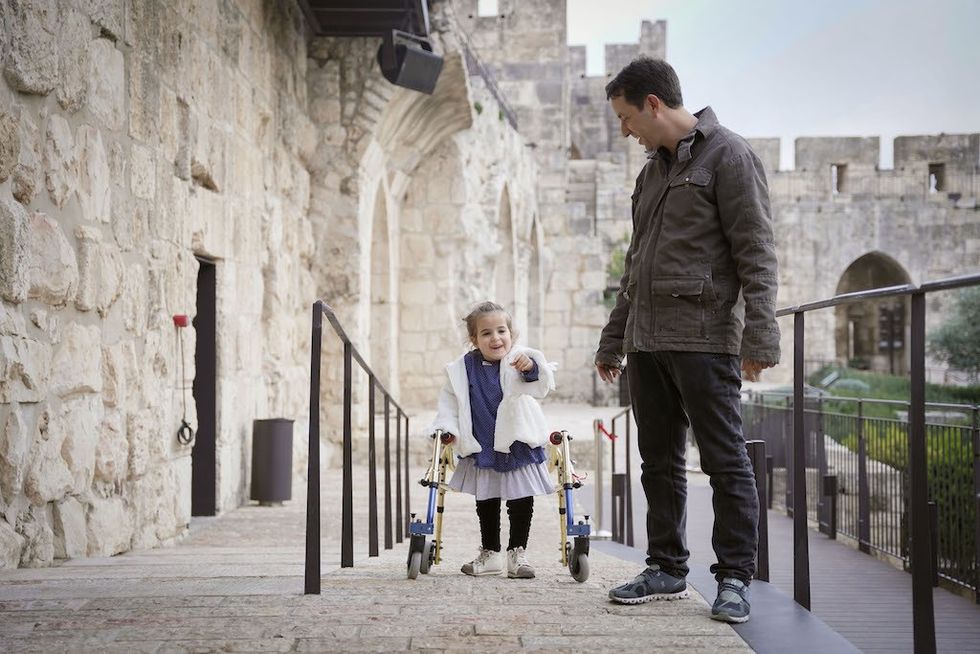
One of the challenges inherent in turning an ancient fortress built to keep people out into a museum was making it accessible to all visitors. These challenges have been met with the introduction of elevators and ramps. Only the last 50 steps to the top of the Tower of David, and its peerless view of Jerusalem, remained accessible only to those who could cope with the steps.
To address this, a VR experience has been created through the Innovation Lab. This not only shows the view from the top of the Tower, but will, if the viewer focuses on a certain site, pop up both information about that site, and a picture of the inside.
Street Games
From 1 August 2023 until April 2024, the Tower of David will be holding an architecture and technology-based exhibition, Street Games, aimed at families. Located in an old guard room, a console allows visitors to recreate and redesign a famous Jerusalem street that will then be projected onto the walls of the room.
“The idea is to show that Jerusalem’s architecture is unique, because of all the cultures that have ruled the city,” Lieber explains:
“We built a visual dictionary of images that we want the visitors to play with and to learn about because nothing is without meaning here in Jerusalem. Everything is connected to the culture and history. We wanted to choose different streets in Jerusalem where you can dive deep into the history and discover the stories, and also use elements of the architecture to build your own street, playing with the technology and the images.”
She adds:
“This is just an example of the different themes that we are going to discuss in our future exhibitions. As the Museum of Jerusalem, the permanent exhibition is the basis of what we are going to do. But we also want to discuss the present and the future of the city.
"The location of The Tower of David, in between the old city in the East and the modern city in the West, is the perfect location bridge. It's a bridge between communities, between people. It's a platform to discuss the city’s social issues, architectural issues, and topics such as development and preservation.”
A positive reception for Tower of David refresh
The museum’s reception has been overwhelmingly positive. People have commented that there is so much to see it can’t all be fitted into a single visit. Lieber has been planning the new museum for the last ten years, which has affected her objectivity. She says:
“At home, when I have guests and I cook for them, I always feel there isn’t enough. I have to add more dessert, maybe. And it's always the same: people say, ‘We cannot eat all this, it’s too much!’ I felt much the same with this project – that it was never enough; that we should add more galleries, more content; that we should make another video here and move it there, and have a display here. Though the design is quiet and beautiful, the result is very rich.
"There is a lot to see – so much that people feel they must come again – it’s a type of FOMO.”
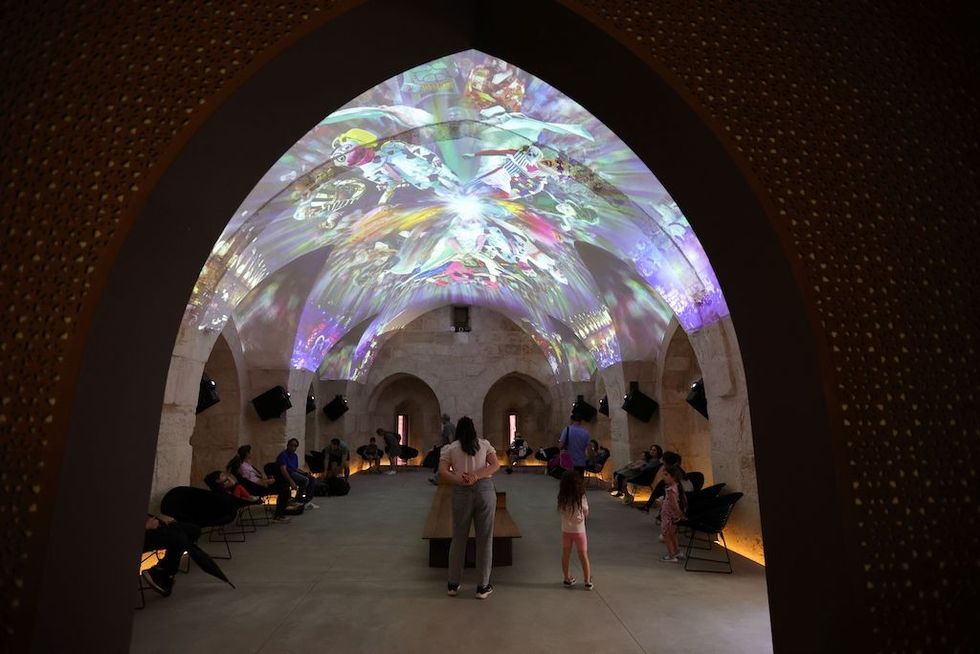
The success of the project has provided a challenge in terms of coming up with the right system for visitors – whether that ends up being a multi-day ticket, or a similar solution.
“It’s rather like when a new book or movie comes out,” Lieber says. “You spend so long on the planning and the creation that the reception from the press, from your visitors, viewers, readers, comes as a surprise. It is amazing to walk outside here and to hear from young visitors. For example, today we had a group of students from the States. I could hear them saying, ‘Wow, this is so cool, you have to see this.’"
A suitable introduction
The museum's introduction movie is by Ari Folman, the Golden Globe-winning Israeli director. The whole incredible wall is projection-mapped so that every ancient stone, every line, could be part of his creation. His brief was to tell the whole story of 4,000 years of history in four minutes, with humour, animation, and music.
"When we saw the result, some people in our team thought it was amazing – really cool and beautiful. Others, the academic advisors, thought it might be too light: was it appropriate to start a historical museum with this? It was a dilemma, because, as we always say, there is no second chance to make a first impression.”
In fact, the introductory animation that greets visitors at the recently renovated Tower of David Museum has been greeted with universal acclaim, enchanting all as it offers a brief history lesson with a modern twist.
“It’s a great success,” Lieber says. “It’s exactly what people want when they start a visit. It's like a promise, a foretaste of the rest of the museum. You can continue, go deep down into the history, and see the artefacts, but the welcome that you get from the outset is cool, beautiful, smart, and funny.
"For me, seeing people’s reactions was important because, until that point, I was not sure about it.”
Construction during the pandemic
Much of the work was done during COVID. On 1 March 2020, the renovations began. On 16 March, the whole of Israel was shut down. For many months, Lieber was the only person in the Citadel. She sat in her office, continuing to work, throughout:
“I was very sad for what had happened to the world, and of course, to tourism and culture,” she explains. “But I understood that it was an opportunity for us to focus on the project, to accelerate everything, and to cut the schedule. In terms of funding, there were no flights, no festivals, and none of the events that donors were used to. However, they could still join our Zoom and WhatsApp calls, and feel they were part of a meaningful project.”
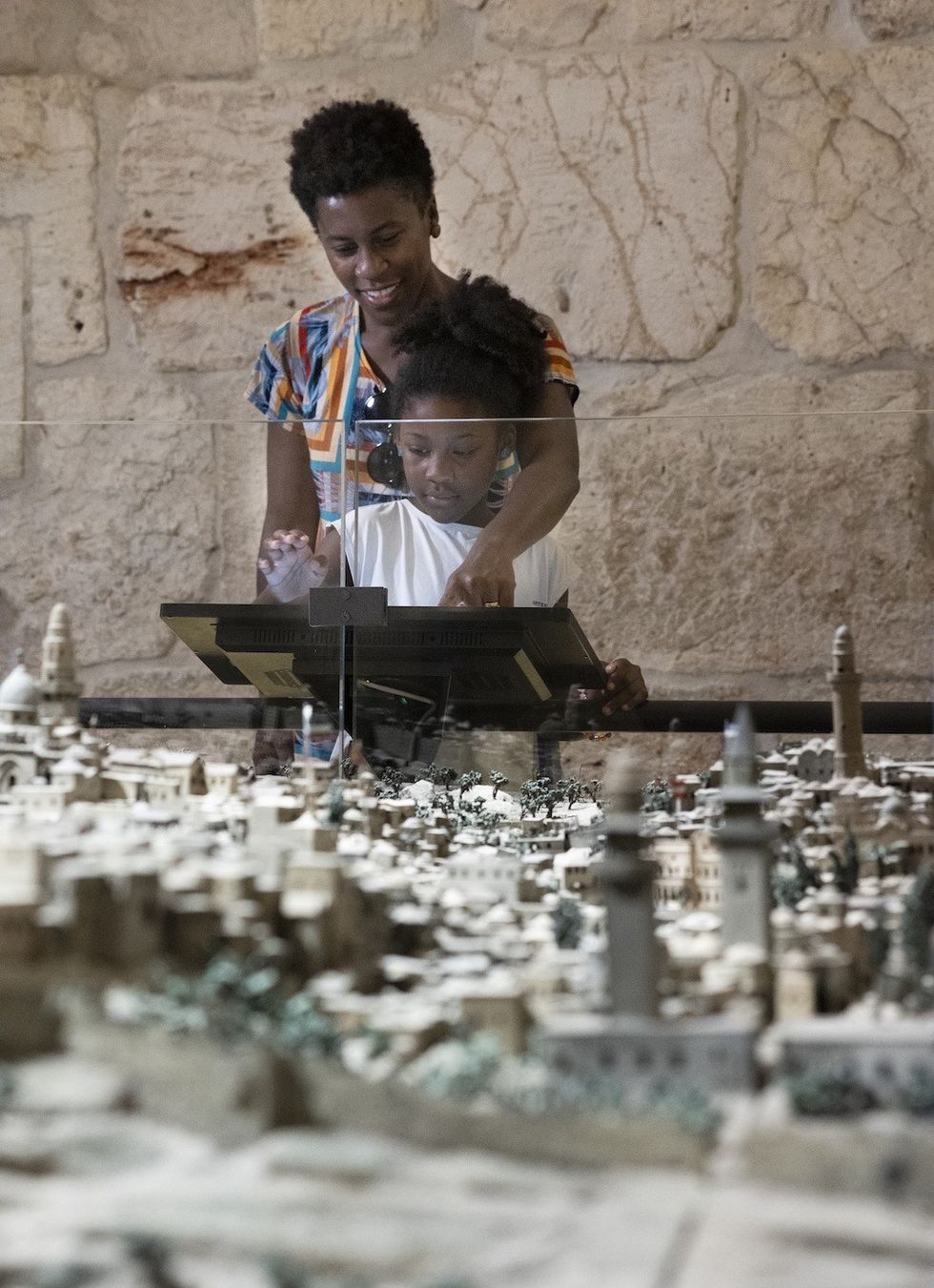
The lead funder was Dame Vivian Duffield, raising over $50 million towards the renovation through the Clore Israel Foundation, with the support of the Municipality of Jerusalem, the Ministry of Jerusalem and Jewish Tradition, the Ministry of Heritage, the Ministry of Tourism, the Patrick and Lina Drahi Foundation, Keren Hayesod, The Jerusalem Foundation, the American Friends of Museums in Israel and the P Austin Foundation.
“Vivien Duffield herself took a personal interest in this,” Lieber comments. “Without her, we couldn’t have planned anything. She was the lead donor from the very beginning, part of establishing the museum 33 years ago. She was our main supporter throughout.”
In closing, Lieber adds,
“I’d just like to invite everyone to visit Jerusalem, and especially the Tower of David, to enjoy the beauty of the site and the new exhibition.”
All images kind courtesy of The Tower of David. Top image credit Ricky Rachman


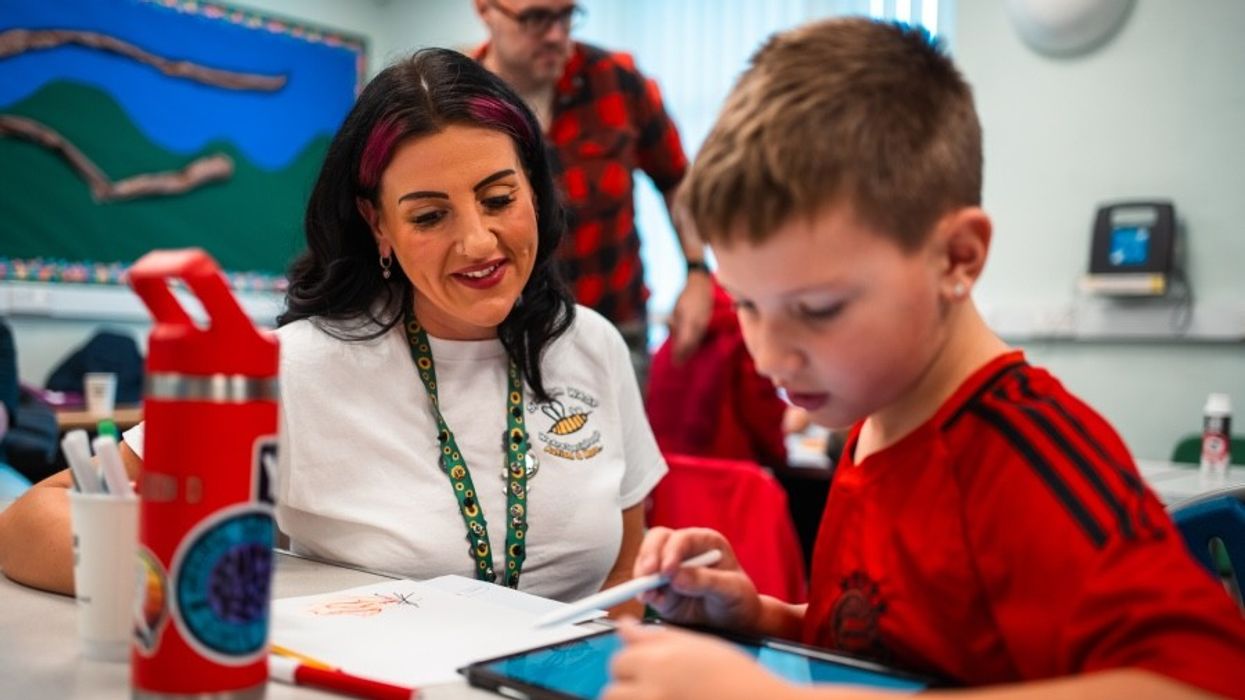
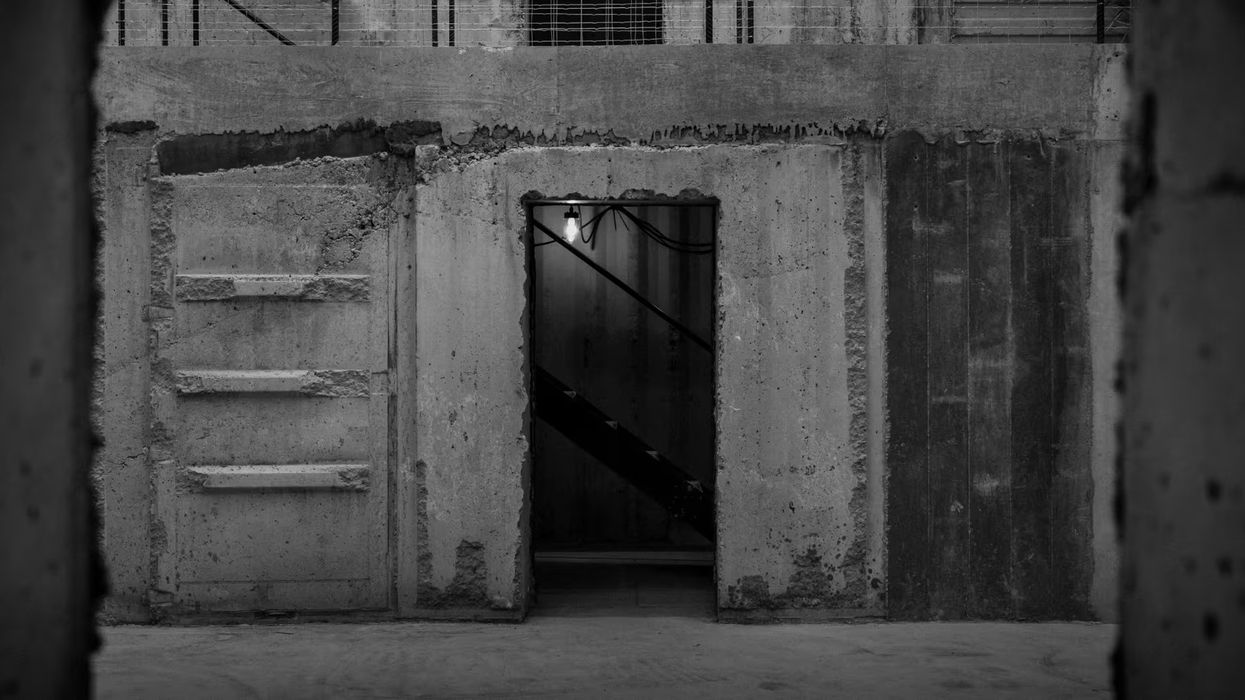




 Ponti on the Kinabatangan River in Borneo
Ponti on the Kinabatangan River in Borneo
 Ponti with mentors Suzanne Gendron, Jackie Ogden and Kris Vehrs
Ponti with mentors Suzanne Gendron, Jackie Ogden and Kris Vehrs  Ponti speaking at AZA Annual Conference 2025
Ponti speaking at AZA Annual Conference 2025


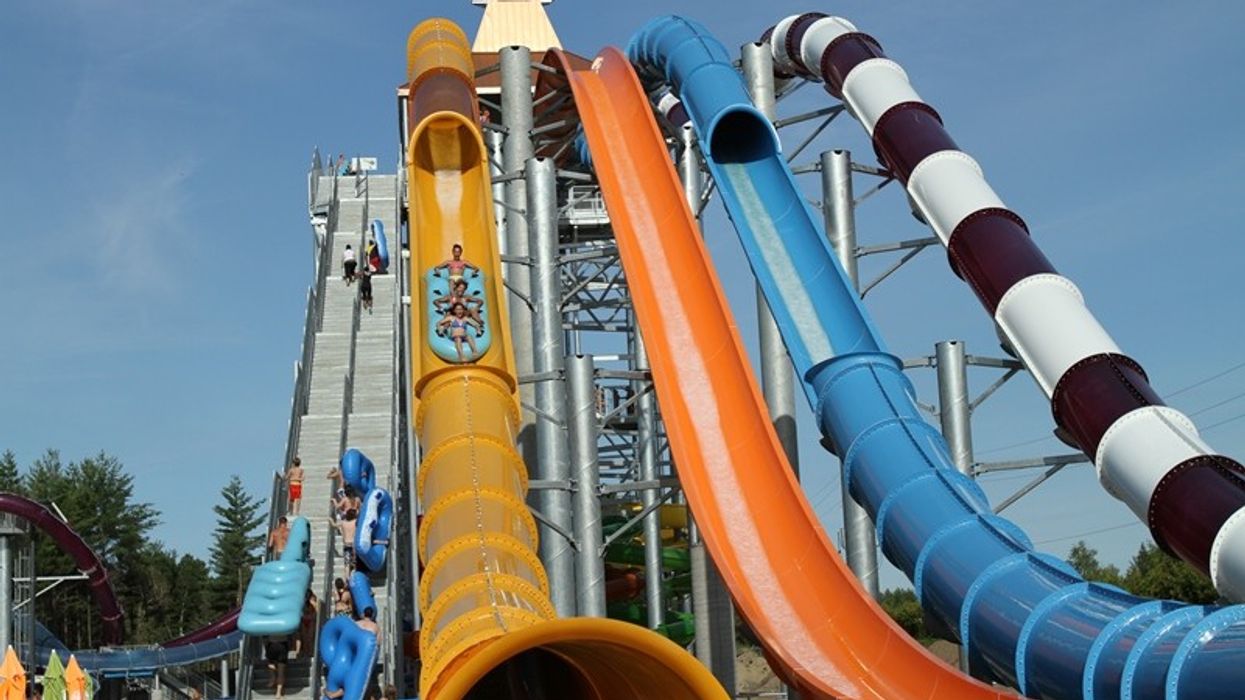
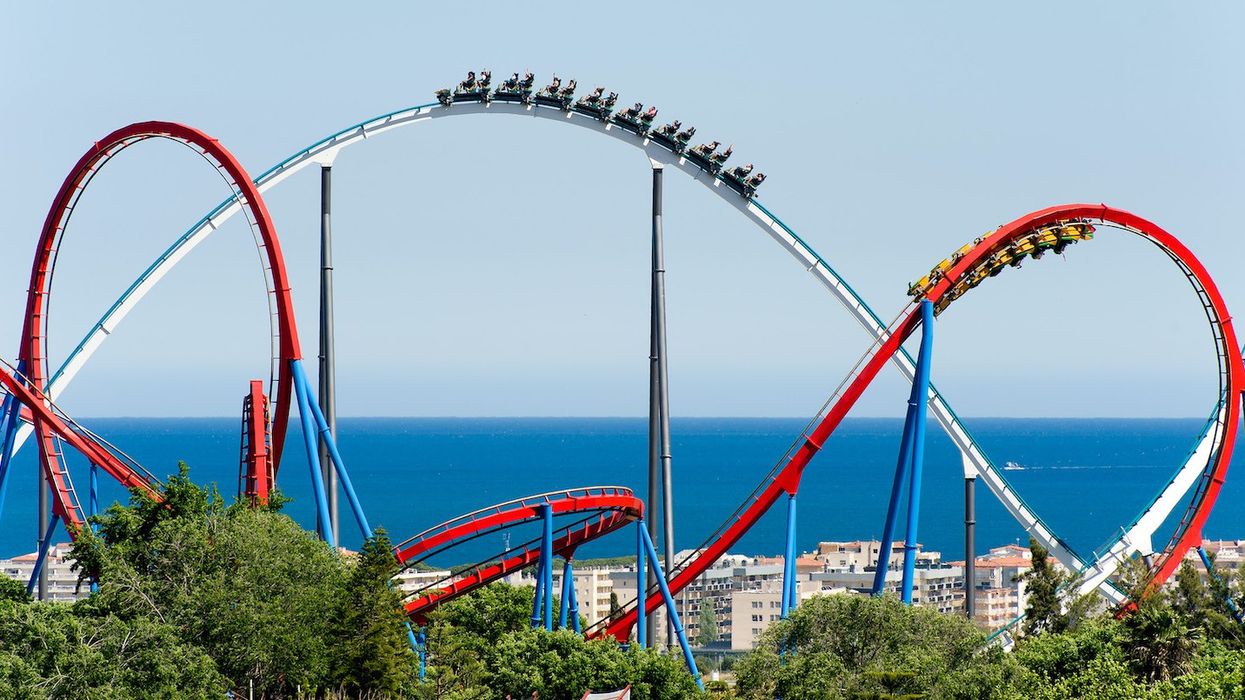


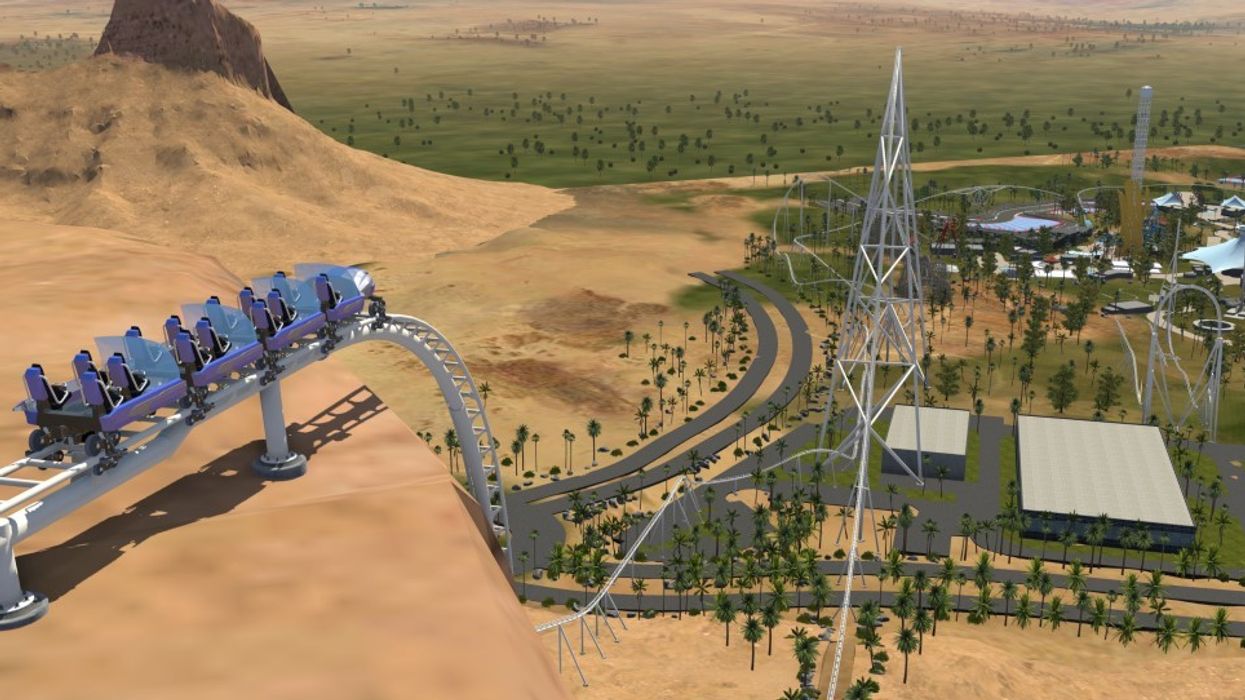
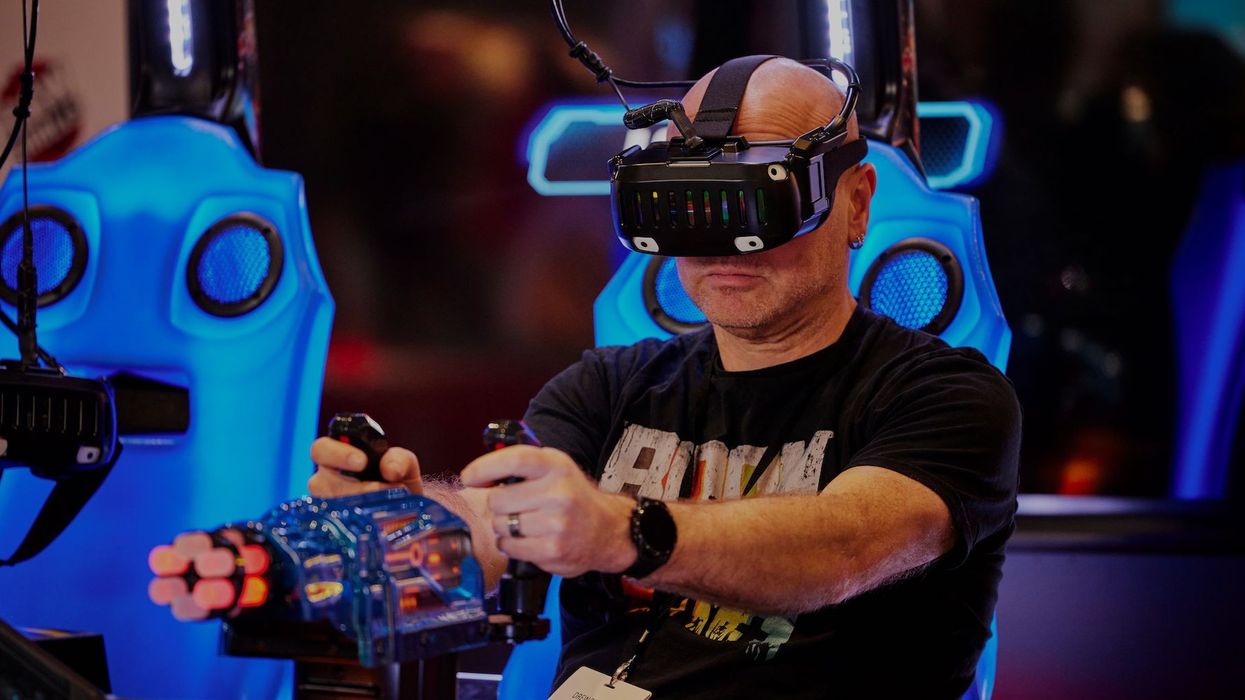

 Matt Eley and Sharon Dickinson
Matt Eley and Sharon Dickinson
 EAG Expo 2025
EAG Expo 2025
 Ballers Clubhouse Carlton
Ballers Clubhouse Carlton 


 TM Lim and Adam Wales
TM Lim and Adam Wales



 Toby Harris
Toby Harris Hijingo
Hijingo Flight Club, Washington D.C.
Flight Club, Washington D.C.
 Flight Club Philadelphia
Flight Club Philadelphia Flight Club Philadelphia
Flight Club Philadelphia Bounce
Bounce Hijingo
Hijingo Bounce
Bounce
 Fernando Eiroa
Fernando Eiroa







